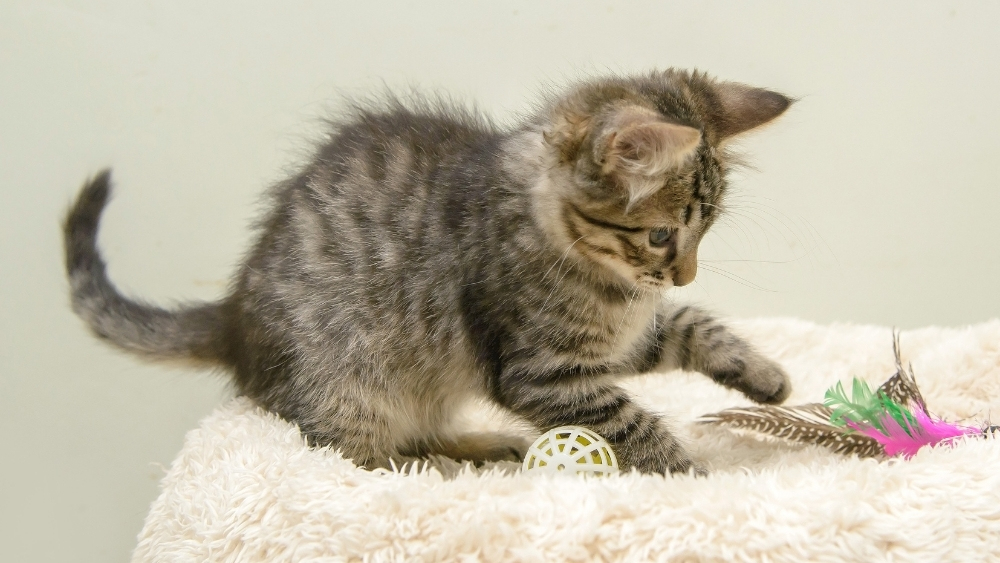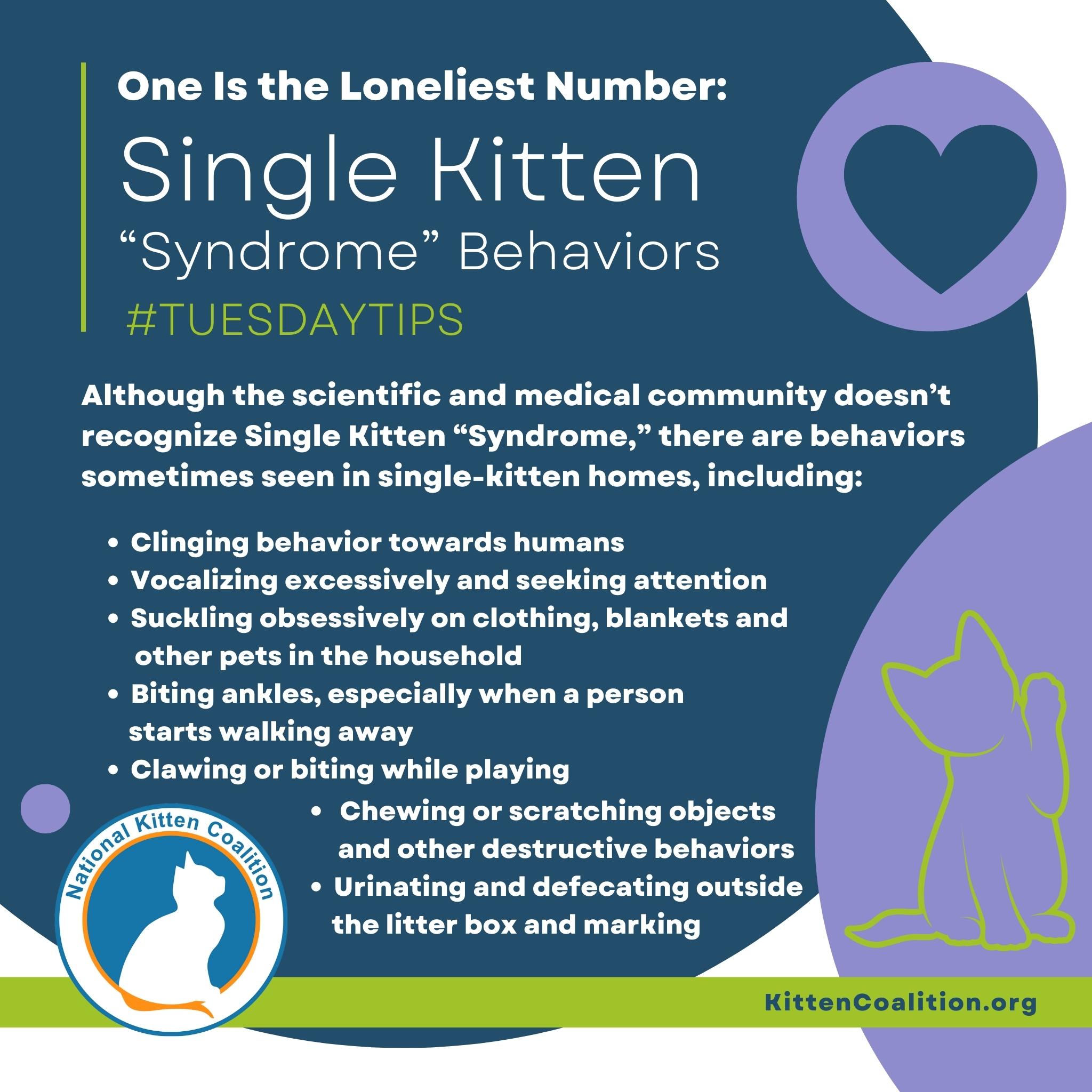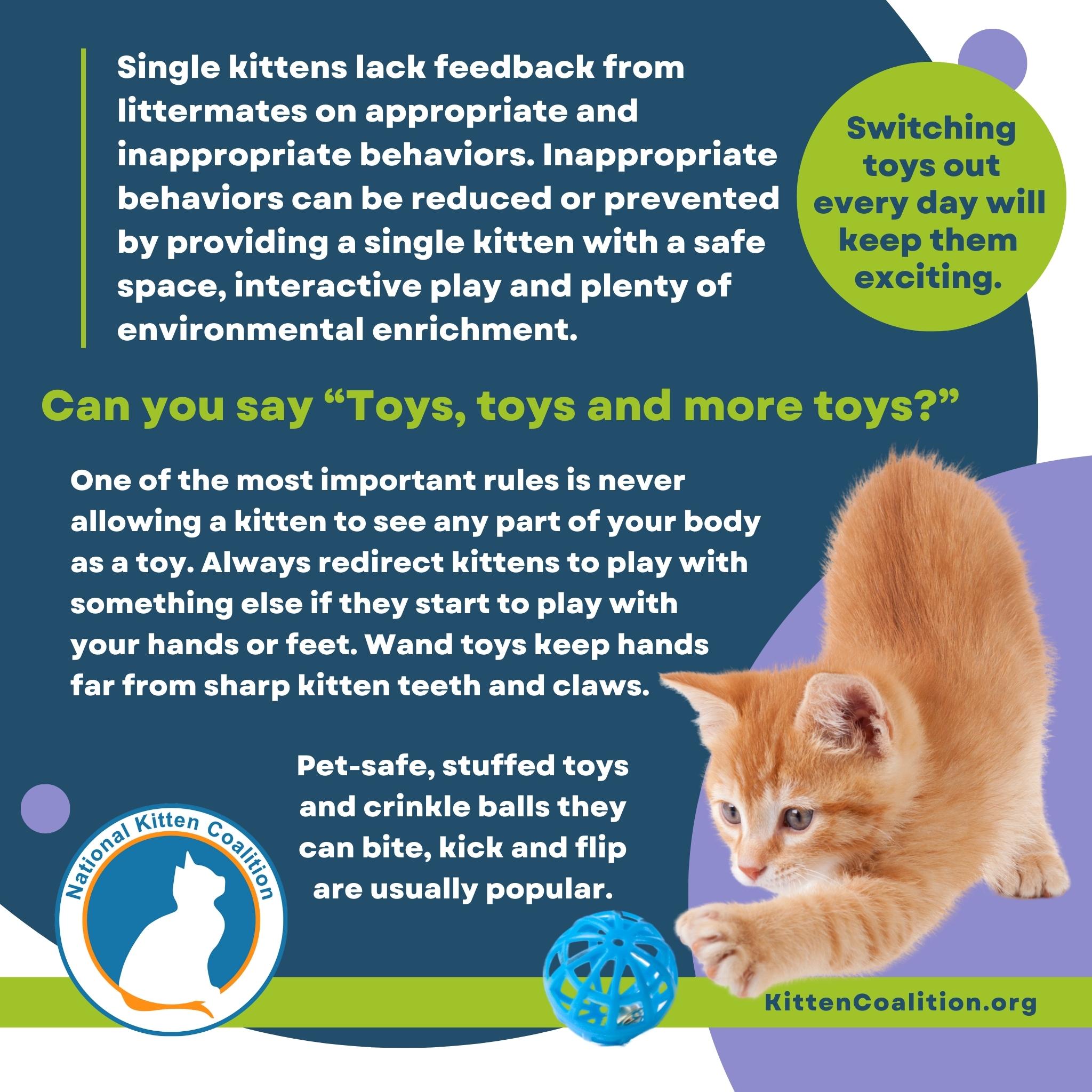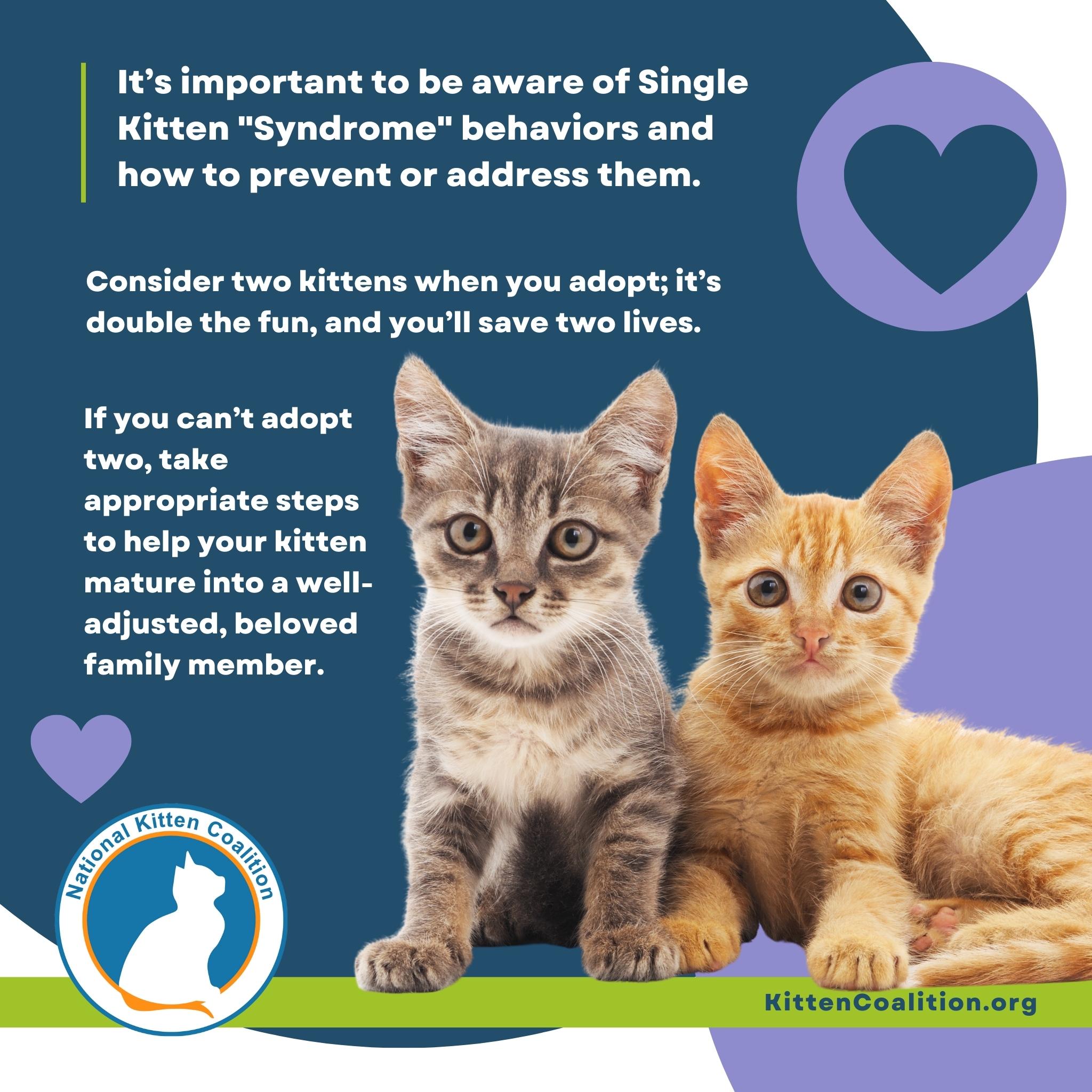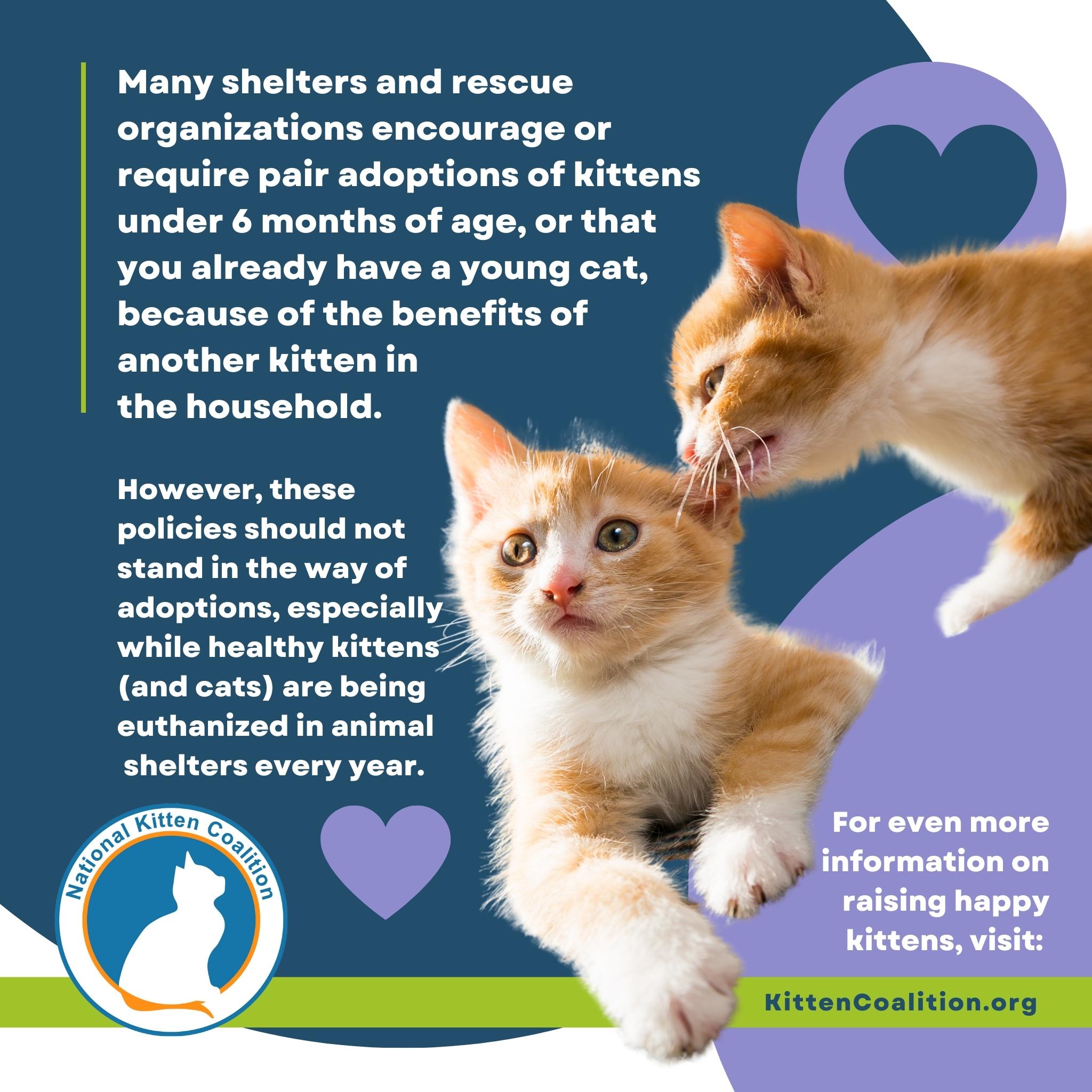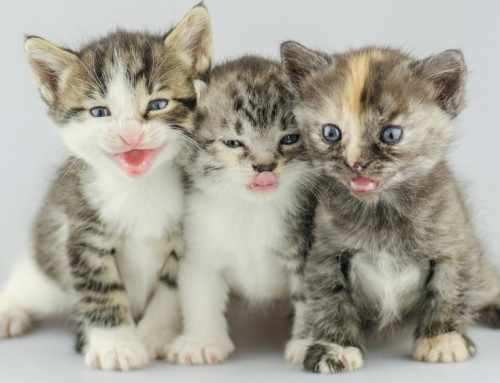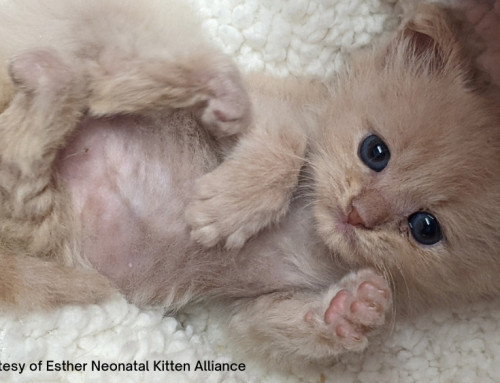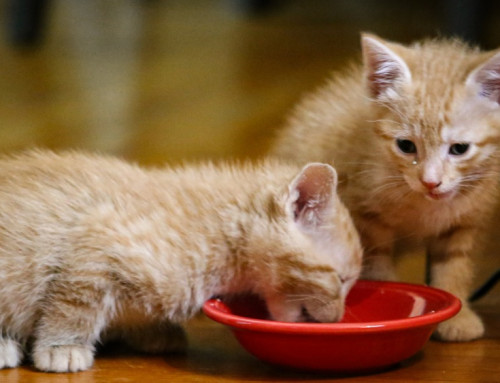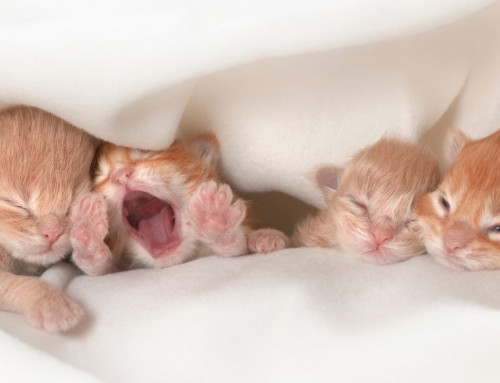Share this resource or email it to a friend!
Have you ever heard an animal shelter or rescue organization state, “Two kittens are better than one?” You might initially think this is just a way to get more kittens adopted, but adopters as well as kittens benefit from welcoming pairs as family members.
Many shelters and rescue organizations encourage or require pair adoptions of kittens under 6 months of age, or that you already have young cat, because of the benefits of another kitten in the household. However, these policies should not stand in the way of adoptions, especially while healthy kittens (and cats) are still being euthanized in animal shelters every year.
Although the scientific and medical community doesn’t recognize Single Kitten “Syndrome,” there are behaviors sometimes seen in single-kitten homes, including:
- Clinging behavior towards humans
- Vocalizing excessively and seeking attention
- Suckling obsessively on clothing, blankets and other pets in the household
- Clawing or biting while playing
- Biting ankles, especially when a person starts walking away
- Chewing or scratching objects and other destructive behaviors
- Urinating and defecating outside the litter box and marking
A lack of feedback from littermates can have lasting effects into adulthood. Because this feedback on appropriate and inappropriate behaviors is so critical, the best way to prevent Single Kitten “Syndrome” behaviors is to adopt two kittens, whether litter mates or kittens of similar age.
Two kittens are very entertaining and use up each other’s endless kitten energy. They will teach each other that hard biting, scratching and clawing during play is not appropriate. But don’t worry, during their development, both kittens will also bond to family members in addition to each other.
If you’re unable to adopt two kittens, providing a safe space, plenty of environmental enrichment and appropriate, interactive play will help prevent the development of Single Kitten “Syndrome” behaviors. If you’re already observing Single Kitten “Syndrome” behaviors, these same strategies can be used to stop the progression of or even reverse the unwanted behaviors.
Young kittens can get into trouble when left unsupervised so using a crate or playpen, which most people traditionally consider for dogs, is a great way to have your kitten close but out of harm’s way. If your kitten is too active at night and tries to wake you up to get your attention, an intense play session followed by a snack just before bedtime will often help prevent the nighttime crazies and encourage the kitten to sleep. Playing with your kitten is also a great way to strengthen the bond between both of you.
Providing lots of warm, cozy spaces, such as small beds, fleece blankets and stuffed toys that have a heartbeat sound, helps kittens feel safe enough to rest and sleep. Placing these items close to where you sleep may help kittens feel even more secure.
In addition, environmental enrichment is very important for kittens and all cats in general. Kittens can become very bored if alone and without sufficient environmental enrichment. They’ll find their own objects to play with, which may not be to your liking or safe, if you don’t provide ones. Cat scratchers, cat trees and towers and other safe places to climb are very important.
Another good way to provide enrichment is to feed part of your kitten’s daily diet in a puzzle feeder that encourages the kitten to “hunt” for food. Putting a bird feeder outside a window and placing a cat tree or window seat nearby also provide hours of entertainment. If a bird feeder is not an option, there are cat-friendly wildlife videos that you can play for your kitten to enjoy.
Toys are also important for environmental enrichment, and play is an important outlet for excessive energy. One of the most important rules is never allowing a kitten to see any part of your body as a toy. While nibbling or biting on your fingers may be cute while kittens are small, this is much less desirable when they have become full-grown and have their adult teeth.
Always redirect a kitten to play with something else if they start to play with your hands or feet. Pet-safe, stuffed toys that they can bite, kick and flip are very useful as they mimic the size of other kittens or prey animals.
Use gentle touch whenever engaging your kitten in play, and redirect any unwanted biting to toys. When you play with excited kittens, wand toys keep your hands far from their sharp teeth and claws. Toys with ball tracks and mylar crinkle balls that make sounds can be very effective in engaging a kitten.
Toys don’t have to be store bought or expensive. An empty tissue box, a small box with some dry food or treats inside, a pingpong ball or even a toilet paper roll can provide kittens with endless entertainment. Just make sure that whatever you provide is large enough that it cannot be swallowed or entangle the kitten.
The most important thing to help keep your kitten engaged with toys is to switch them out every few days. A few “new” toys are more exciting than the same dozen toys day in and day out.
It’s important to be aware of Single Kitten “Syndrome” behaviors and how to prevent or address them. Consider two kittens when you adopt; it’s double the fun, and you’ll save two lives. If you can’t adopt two, take appropriate steps to help your kitten mature into a well-adjusted, beloved family member.

